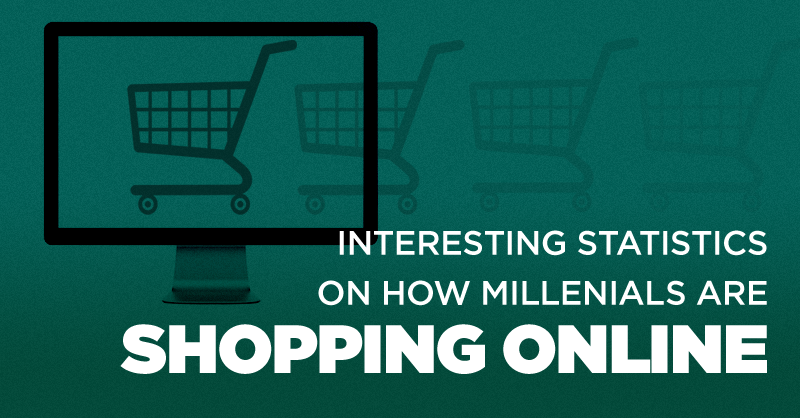
This article was originally published on Medium.
Looking for continued success with your customers? Start reading up on Generation Y.
Millennials or Generation Y are defining the way in which the global marketplace is heading, whether their behaviors are considered positive or negative for our continued growth. Their beliefs, interests and behaviors will continue to impact and shape our future across every aspect of life. Businesses should begin to take note of millennial shopping habits in order to adequately prepare for a continuing rise in the dominance of a generation invested in technology, social media and creativity.
1. Women and men ages 18 to 34 are more likely than 35 to 64 year olds to engage in nearly every online shopping activity, with 40% of males and 33% of females in the younger age group saying they would buy everything online if they could. The preferences and dependencies millennials have are different from past generations, alter your business strategy accordingly to connect with Gen Y online. (source:eMarketer)
2. 37% of millennials claim to distrust big business. This is where social media and its ability to highlight authenticity comes into play for the connected generation. (source: Forbes)
3. 64% of millennials feel that companies should offer more ways to share their opinions online. It’s all about engaging millennials in a two-way conversation where they feel involved and in the process. If your listening to consumer feedback, take down a note our two from millennials. (source: Bazaarvoice)
4. 51% of millennials say consumer opinions found on a company’s website have a greater impact on purchase decisions than recommendations from family and friends. Analyzing crowd-sourced information about a company has begun and will continue to be viewed as more reliable than just taking in the feedback of your social circle. (source: Bazaarvoice)
5. The purchasing power of millennials is estimated to be $170 billion per year. This shines a light into the growing influence this generation will continue to have over the world’s economy. (source: ComScore)
6. Millennial parents buy significantly more based on price than they do on quality. Before being parents, millennial buying decisions were 57% on quality, with children it drops to 50%. Many millennials prefer to save money after having children, which is expected with the addition of a new expenses for the family. Depending on your industry, experiment with targeting new millennial families on savings as opposed to long-term quality.(source: Fort Mill Times)
7. When shopping for products, 50% of millennial parents say they try to buy products that support causes or charities. This can be seen with companies like Warby Parker, Tom’s and Whole Foods rising in popularity due in part to their widely known social good programs. (source: Fort Mill Times)
8. A retailer’s ability to make a millennial smile is 33% more important than it is to a baby boom. This ties back to the last statistic illustrating that companies need to try more now than ever before to win over the heat’s of consumers. (source: Casual Living)
9. 52% of millennials were more likely to make impulse purchases than any other generation. There could be correlations drawn to how fast our culture of consumption is moving as compared to past generations, which could affect how quickly millennials make a decision to buy when shopping. (source: TIME)
10. Close to half of millennial females shop for apparel more than twice a month, versus 36% of older females. Millennial males enjoy shopping, too, spending twice as much on garb per year as non-millennial males.Gen Y men and women are more likely to buy more apparel for many reasons, one being the cost and perceived value of a clothing item like a t-shirt. It is more common today to buy a $10 t-shirt that will last for a few months then a $100 t-shirt that will last two years. The apparel market has been structured this way for some time and certainly has an impact on this behavior. (source: Market-Truth)
11. Millennials are 216% more likely to be influenced by in-store touch screen displays. This says a lot about how the types of devices millennials use everyday, like tablets, laptops and smartphones, are influential and have an impact when it comes to shopping and improving upon the shopping experience. (source: Infographics Mania)
12. Millennial moms spend 4 hours more per week than the average mom spends on social networks. They spend an average of 17.4 hours per week on their social media networks. Millennial moms are savvier which is a challenge and opportunity for marketers to connect with them in a more meaningful way, which could have major influences on their shopping habits. (source: Weber Shandwick)
13. Millennial moms are asked 9.6 times per month on average for product recommendations, as compared to all moms who are asked 6.3 times per month for product advice. There is likely a perception of more connectedness with a millennial mom and her circle that could help give them more exposure to more products and services, as well as a wider range of feedback from others. (source: Weber Shandwick)
14. 60% of millennials say that it is convenient to have a smartphone or tablet to research or purchase a product or service on the go. More than 50% use their smartphones to research products or services while shopping. The time to think mobile first was yesterday. Every business should have a strategy for how to reach consumers on mobile and this merely reinforces that point. (source: Barkley)
15. 42% of millennials tend to shop for groceries once a week, as opposed to once a month, twice a month, 2-4 times a week, 5-6 times a week or every day. This make sense for many millennials living in big cities not restocking with a few weeks of meals, but instead for a week at a time, due to the limitations of public transportation and time in their busy week. (source: Barkley)
16. Similarly to other generations, a majority of millennials, that’s 27%, prefer mass retailers like Target or Walmart for their shopping needs.Saving time, money and energy is as important to millennials as it was to other generations, which illustrates there isn’t a major change in this shopping preference. (source: Barkley)
17. 37% of millennials love shopping and 48% enjoy it. 50% of millennial men and 70% of millennial women consider shopping a form of entertainment and something to share with friends and family. This relates back to the other statistics about how millennials want retailers to make them smile as well as entertain them since shopping is often seen as a form of entertainment among their social circles. (source:Urban Land Institute)
18. 45% of millennials spend more than an hour a day looking at retail-oriented websites. This further illustrates a huge opportunity for businesses to better engage their customers online to capture the interest of young and adult members of Gen Y. (source: Urban Land Institute)
19. Millennials, ages 18-34, were more likely to share their location to receive coupons from nearby businesses: 56%, vs. 42% of those 35 and over. 25% also said that they would give away personal information to get more relevant advertising, compared with 19% of the 35 and over group. Millennials are more comfortable about releasing their personal info when it comes to getting discounts or relevant advertising, which make sense for a generation more connected than any prior. (source:USA Today)
20. Of survey respondents, 92% said that real-time product availability would influence where they shop. This is a statistic that brands should not ignore, since providing customers with the availability of product online or in stores is possible, which according to this survey, is an important factor that influences Gen Y shopping behavior. (source: Accenture)
Which statistics was the most shocking? Is your business ready for millennials? Share your thoughts in a note or with me on Twitter.


